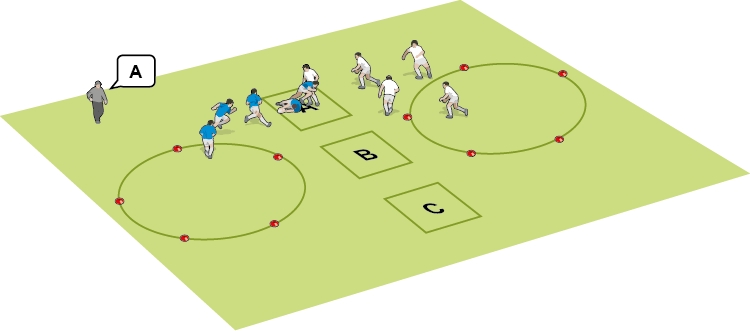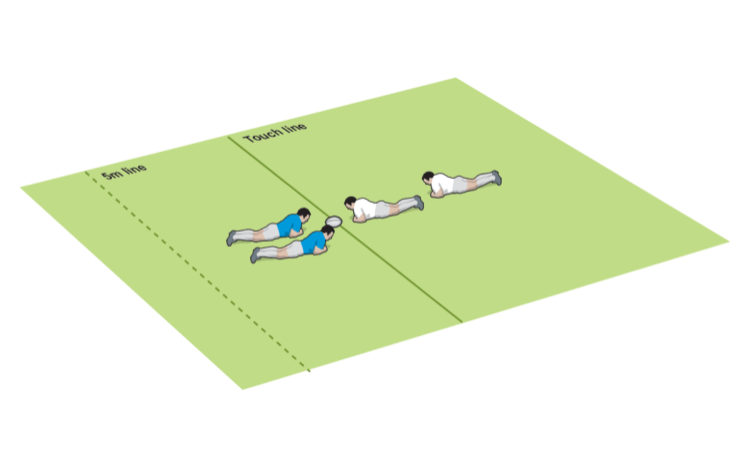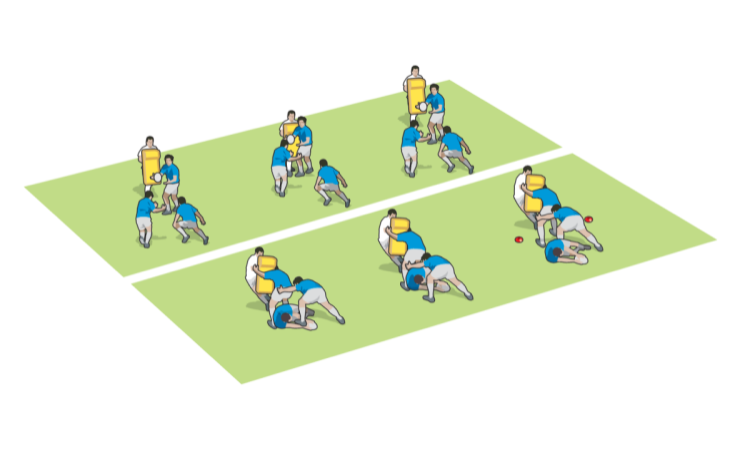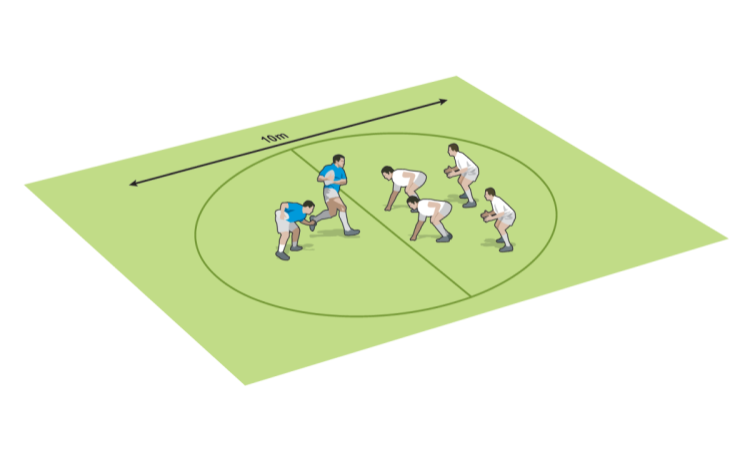You are viewing
1 of your 2 free articles
Scramble rucks
Rucking & Maulingby Dan Cottrell
Even when your players run predictable lines, there are still going to be occasions when they need to support the tackled player when they least expect it. This session works on this part of the game. If the ball carrier is momentarily isolated, support players need to react quickly to secure the ball.

Split into four attackers and four defenders with a ball carrier and defender separate. The groups of four run around the circles (top picture), with only one player allowed between each cone at any one time (thus avoiding bunching).

When you shout a letter, the ball carrier runs into and through that box, and gets tackled.
At the same time, the circle attackers and defenders react to win the ball. Play until there is either a turnover or the ball is clearly won by the attacking team.

Split into teams of seven. Put two players from each team inside each of the two boxes with a ball each and then three players from each team between the boxes.
Start playing two games of 2 v 2, full contact. Then release the other players. They have to decide which situation to support.
Once in the boxes, players cannot leave. Finish that box on a try or infringement. You can either have one team start with both balls, or you can give one ball to each team.
TECHNIQUE
ACTIVITY

Split into four attackers and four defenders with a ball carrier and defender separate. The groups of four run around the circles (top picture), with only one player allowed between each cone at any one time (thus avoiding bunching).

When you shout a letter, the ball carrier runs into and through that box, and gets tackled.
At the same time, the circle attackers and defenders react to win the ball. Play until there is either a turnover or the ball is clearly won by the attacking team.
GAME SITUATION

Split into teams of seven. Put two players from each team inside each of the two boxes with a ball each and then three players from each team between the boxes.
Start playing two games of 2 v 2, full contact. Then release the other players. They have to decide which situation to support.
Once in the boxes, players cannot leave. Finish that box on a try or infringement. You can either have one team start with both balls, or you can give one ball to each team.
TECHNIQUE
- Tackled player: fight to the ground to present the ball.
- Support players: identify threats as you arrive and clear them beyond your team mate on the ground.
- Better to be late and ready than early and unprepared.
Related Files
Vol-1-Issue-502-D-Cottrell-scramble-rucks.pdfPDF, 1.1 MB
Newsletter Sign Up
Coaches Testimonials

Gerald Kearney, Downtown Las Vegas Soccer Club

Paul Butler, Florida, USA

Rick Shields, Springboro, USA

Tony Green, Pierrefonds Titans, Quebec, Canada
Subscribe Today
Be a more effective, more successful rugby coach
In a recent survey 89% of subscribers said Rugby Coach Weekly makes them more confident, 91% said Rugby Coach Weekly makes them a more effective coach and 93% said Rugby Coach Weekly makes them more inspired.
Get Weekly Inspiration
All the latest techniques and approaches
Rugby Coach Weekly offers proven and easy to use rugby drills, coaching sessions, practice plans, small-sided games, warm-ups, training tips and advice.
We've been at the cutting edge of rugby coaching since we launched in 2005, creating resources for the grassroots youth coach, following best practice from around the world and insights from the professional game.
More from us
© 2023 Rugby Coach Weekly
Part of Green Star Media Ltd. Company number: 3008779
We use cookies so we can provide you with the best online experience. By continuing to browse this site you are agreeing to our use of cookies. Click on the banner to find out more.













